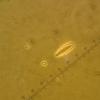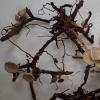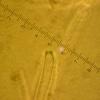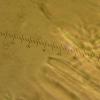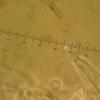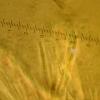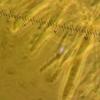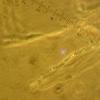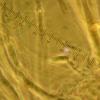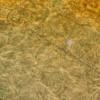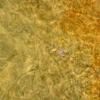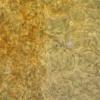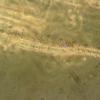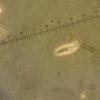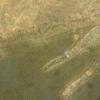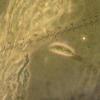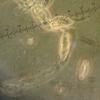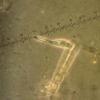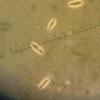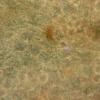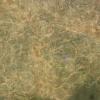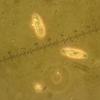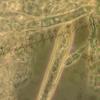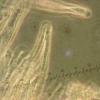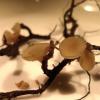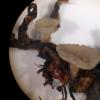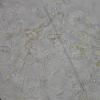
15-12-2025 15:48
 Danny Newman
Danny Newman
Melanospora cf. lagenaria on old, rotting, fallen

15-12-2025 15:54
 Johan Boonefaes
Johan Boonefaes
Unknown anamorph found on the ground in coastal sa

15-12-2025 21:11
 Hardware Tony
Hardware Tony
Small clavate hairs, negative croziers and IKI bb

15-12-2025 07:09
 Danny Newman
Danny Newman
indet. Rutstroemiaceae sp. on unk. fallen leavesMc

15-12-2025 07:05
 Danny Newman
Danny Newman
Pseudosclerococcum golindoi (det: Zotto)near Cosb

15-12-2025 11:49
 Danny Newman
Danny Newman
ITS sequences from the following two collections B

15-12-2025 12:34
 Danny Newman
Danny Newman
indet. Rhytismataceae on oak leafnear Purchase Roa

09-12-2025 12:06
 Andgelo Mombert
Andgelo Mombert
Bonjour,Je recherche l'article concernant Hypobryo
Hymenoscyphus on fern rhizome
Edvin Johannesen,
20-09-2017 11:27
 This Hymenoscyphus (?) was found on Gymnocarpium dryopteris rhizomes in Central Norway. The spores measure approx. 14-16 (-20) x 5 microns and are elllipsoid to slightly inequilateral/navicular and often somewhat pointed at one end. A substantial portion of the spores are germinating with a hypha arising from one end of the spore. Spores are becoming one-septate at maturity. Excipulum consists of a pseudoparenchyma - large spherical/semiprismatic cells up to 30 microns.
This Hymenoscyphus (?) was found on Gymnocarpium dryopteris rhizomes in Central Norway. The spores measure approx. 14-16 (-20) x 5 microns and are elllipsoid to slightly inequilateral/navicular and often somewhat pointed at one end. A substantial portion of the spores are germinating with a hypha arising from one end of the spore. Spores are becoming one-septate at maturity. Excipulum consists of a pseudoparenchyma - large spherical/semiprismatic cells up to 30 microns.I don't find any Hymenoscyphus with this combination of host/substrate and spore measures. Can anyone help? Am I in the wrong genus?
Hans-Otto Baral,
20-09-2017 12:00

Re : Hymenoscyphus on fern rhizome
Hmm, this seems to be a very interesting collection, but it would require a lot of further data to find out what it could be. How large are the apos?
The species could belong in the relationship of Cudoniella, but to verify this I should see the living paraphyses (guttulate?). Did you test the ascus apex with iodine? The shape of the amyloid ring would be important.
typical Hymenoscyphus species have prismatic cells or even t. porrecta.
I am unaware of such a species on fern rhizomes.
Zotto
The species could belong in the relationship of Cudoniella, but to verify this I should see the living paraphyses (guttulate?). Did you test the ascus apex with iodine? The shape of the amyloid ring would be important.
typical Hymenoscyphus species have prismatic cells or even t. porrecta.
I am unaware of such a species on fern rhizomes.
Zotto
Edvin Johannesen,
20-09-2017 12:40
Hans-Otto Baral,
20-09-2017 13:13

Re : Hymenoscyphus on fern rhizome
I am not sure if you mounted the fresh specimen and in what medium. The elements are all dead, which makes it very complicated.
With that size I would consider Cudoniella tenuispora but the large size and the angular excipulum rule out that option.
To show the variation of spore size would also be helpful, and please in water in order to see the contents.
Sorry for being so demanding.
With that size I would consider Cudoniella tenuispora but the large size and the angular excipulum rule out that option.
To show the variation of spore size would also be helpful, and please in water in order to see the contents.
Sorry for being so demanding.
Edvin Johannesen,
20-09-2017 13:32

Re : Hymenoscyphus on fern rhizome
Sorry. I will try to mount in water. More to come.
Edvin Johannesen,
20-09-2017 14:04
Edvin Johannesen,
20-09-2017 14:06
Edvin Johannesen,
20-09-2017 14:07
Hans-Otto Baral,
20-09-2017 17:10

Re : Hymenoscyphus on fern rhizome
Thanks, yes, these are living spores and they contain a few small oil drops at the ends. The phase contrast that you use is difficult for me to interpret. For the spores it seems o.k., but difficult to tell the refraction index (strongly or weakly refractive).
In the paraphyses I see some large round drops but I am not sure are they refractive (I assumne so) or not. Under bright field this would have been clear.
Spore size in C. tenuispora is 12-16 x 4-5.5 µm, so I think this would fit. The septum is very probably a matter of the overmature spores.
The only thing that makes me wonder is the angular texture. That of C. tenuispora is an intricate prismatica, and the cortical cells also contain refractive drops and form hairs, here in surface view.
In the paraphyses I see some large round drops but I am not sure are they refractive (I assumne so) or not. Under bright field this would have been clear.
Spore size in C. tenuispora is 12-16 x 4-5.5 µm, so I think this would fit. The septum is very probably a matter of the overmature spores.
The only thing that makes me wonder is the angular texture. That of C. tenuispora is an intricate prismatica, and the cortical cells also contain refractive drops and form hairs, here in surface view.
Edvin Johannesen,
21-09-2017 12:12

Re : Hymenoscyphus on fern rhizome
OK, thanks. I shall have to check the cortical cells.
